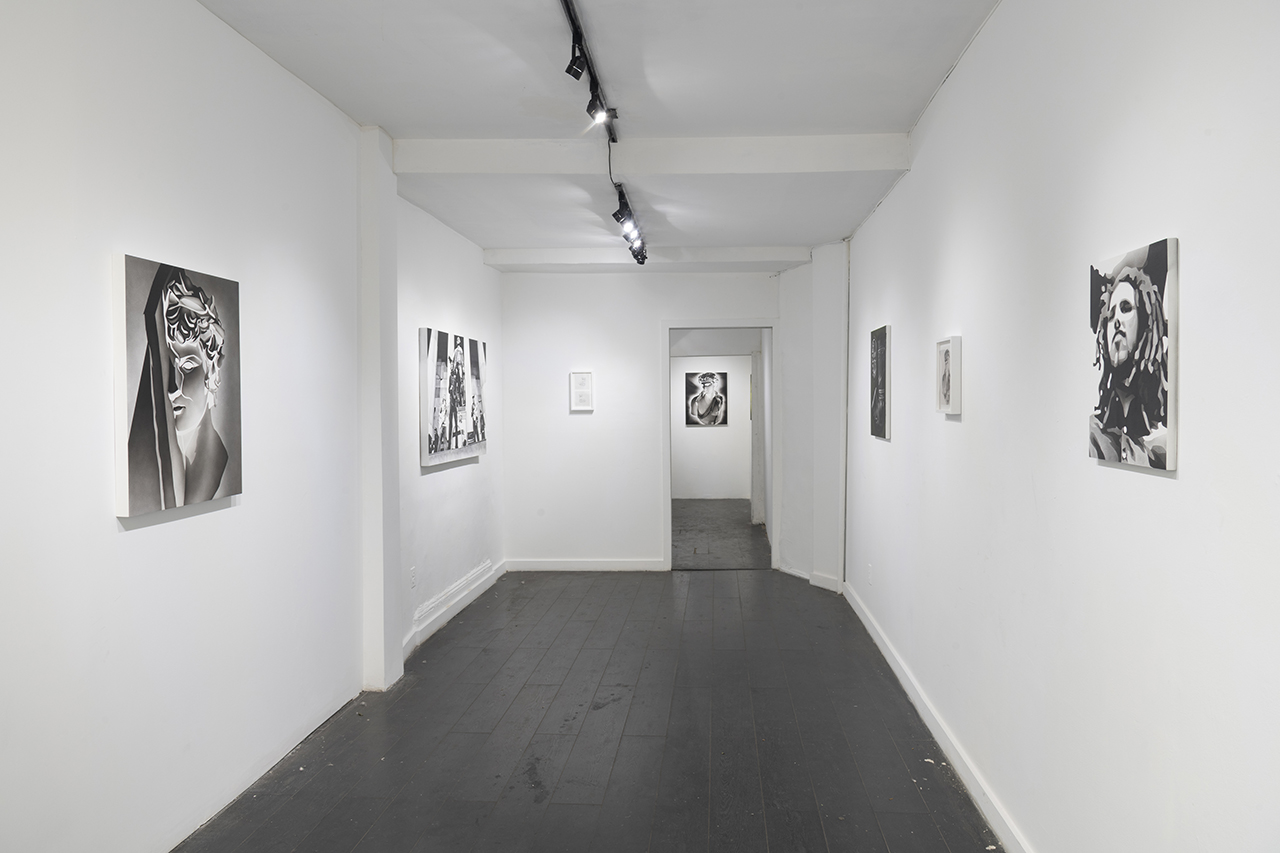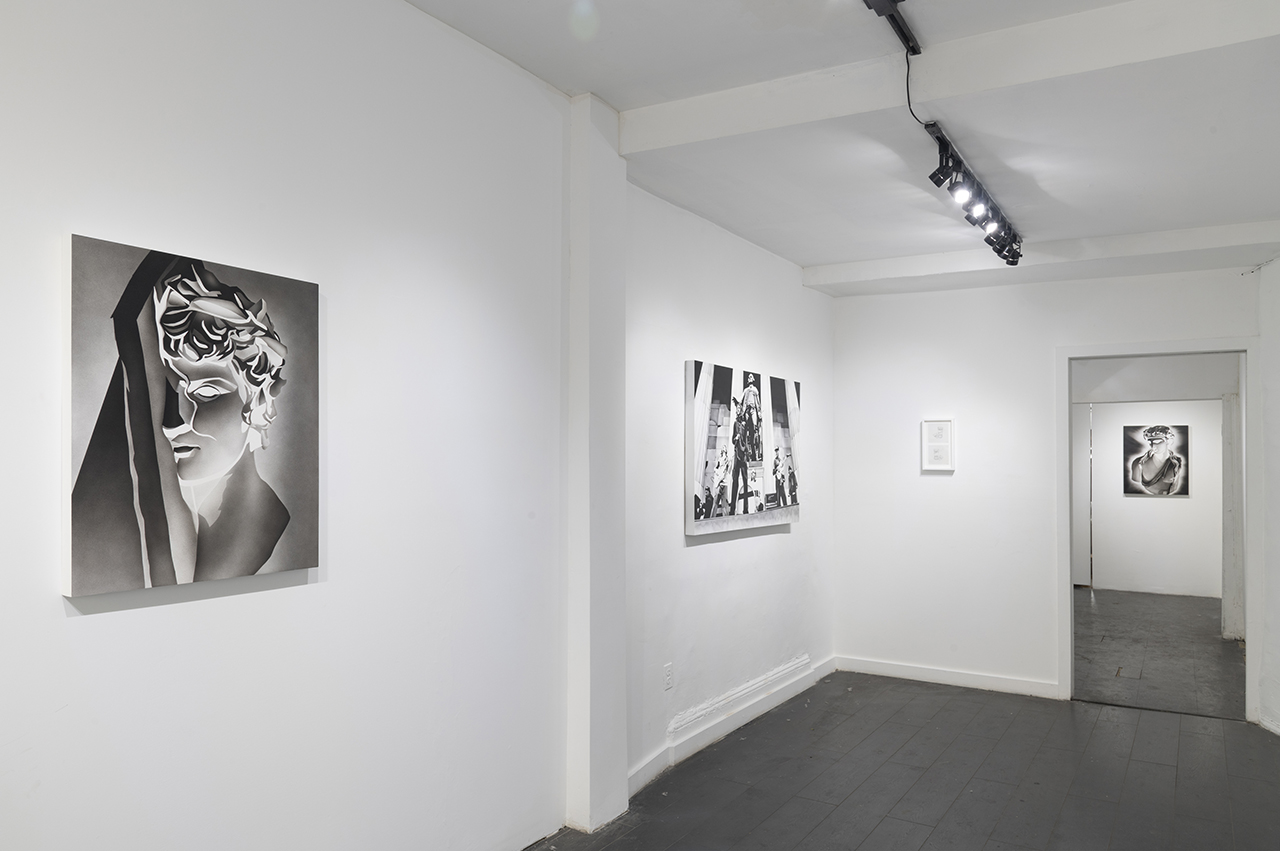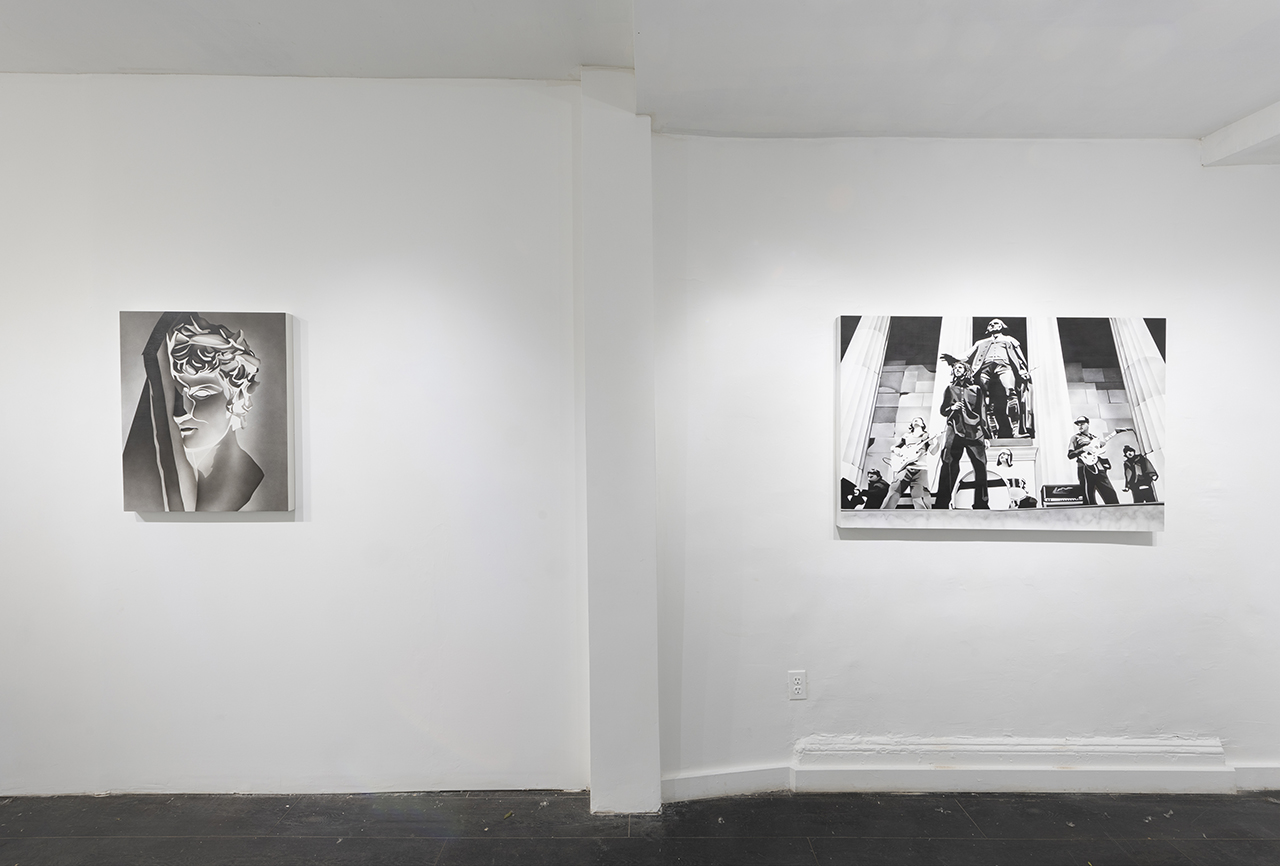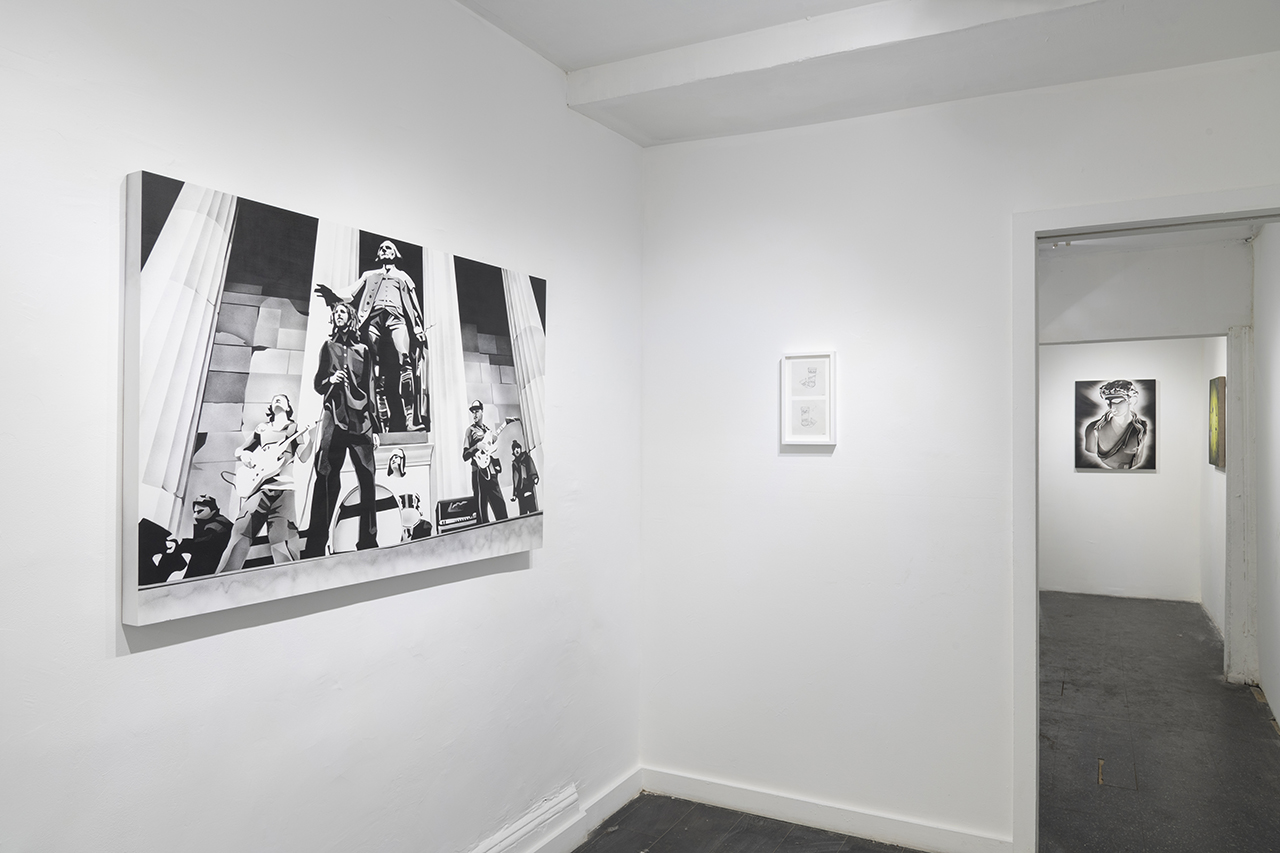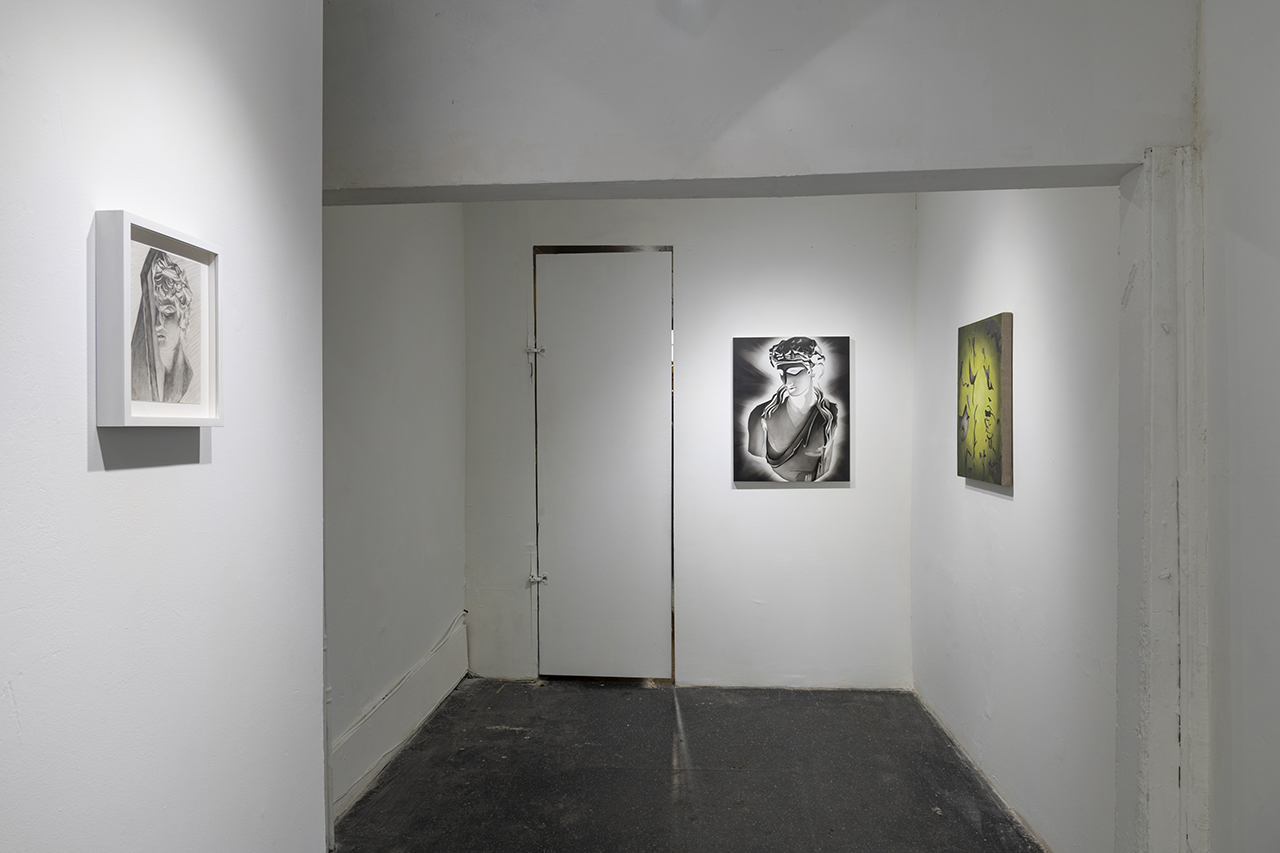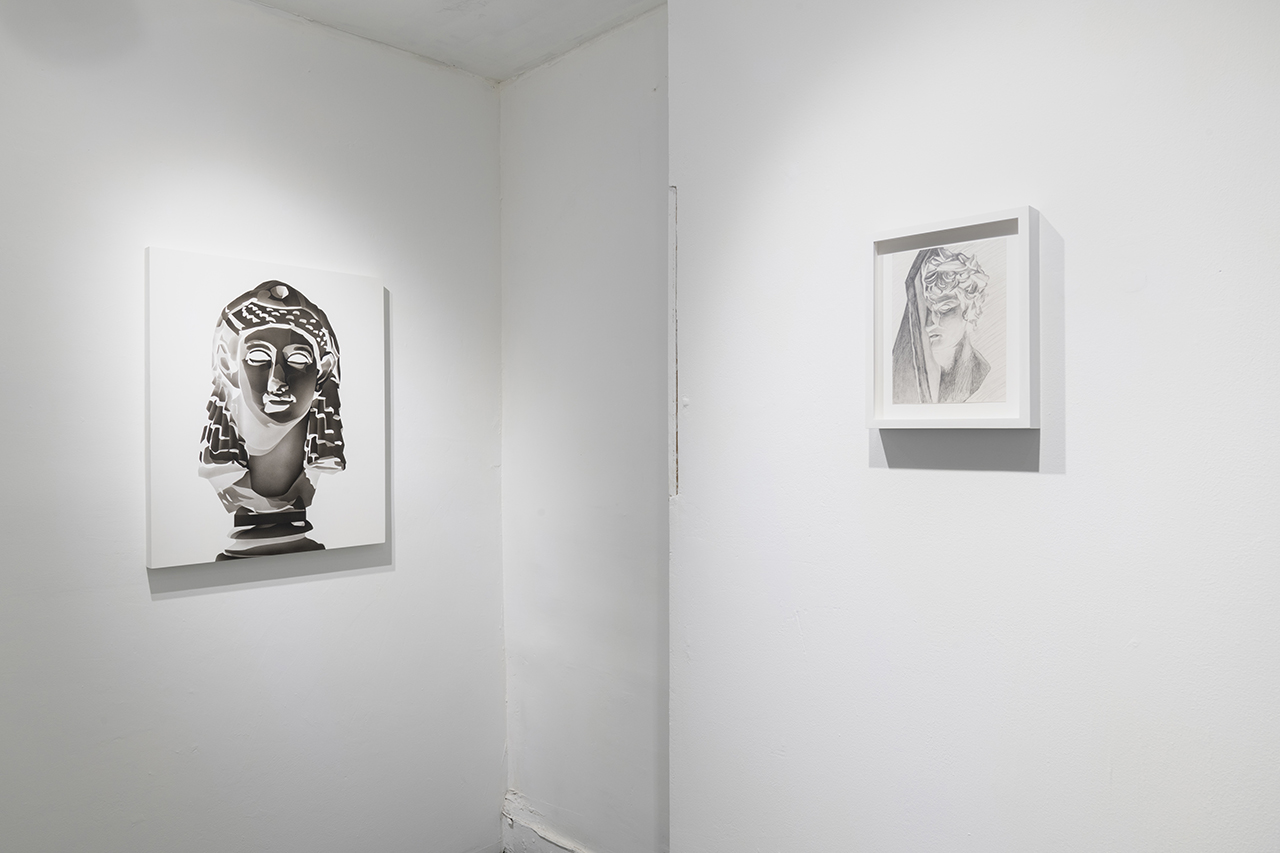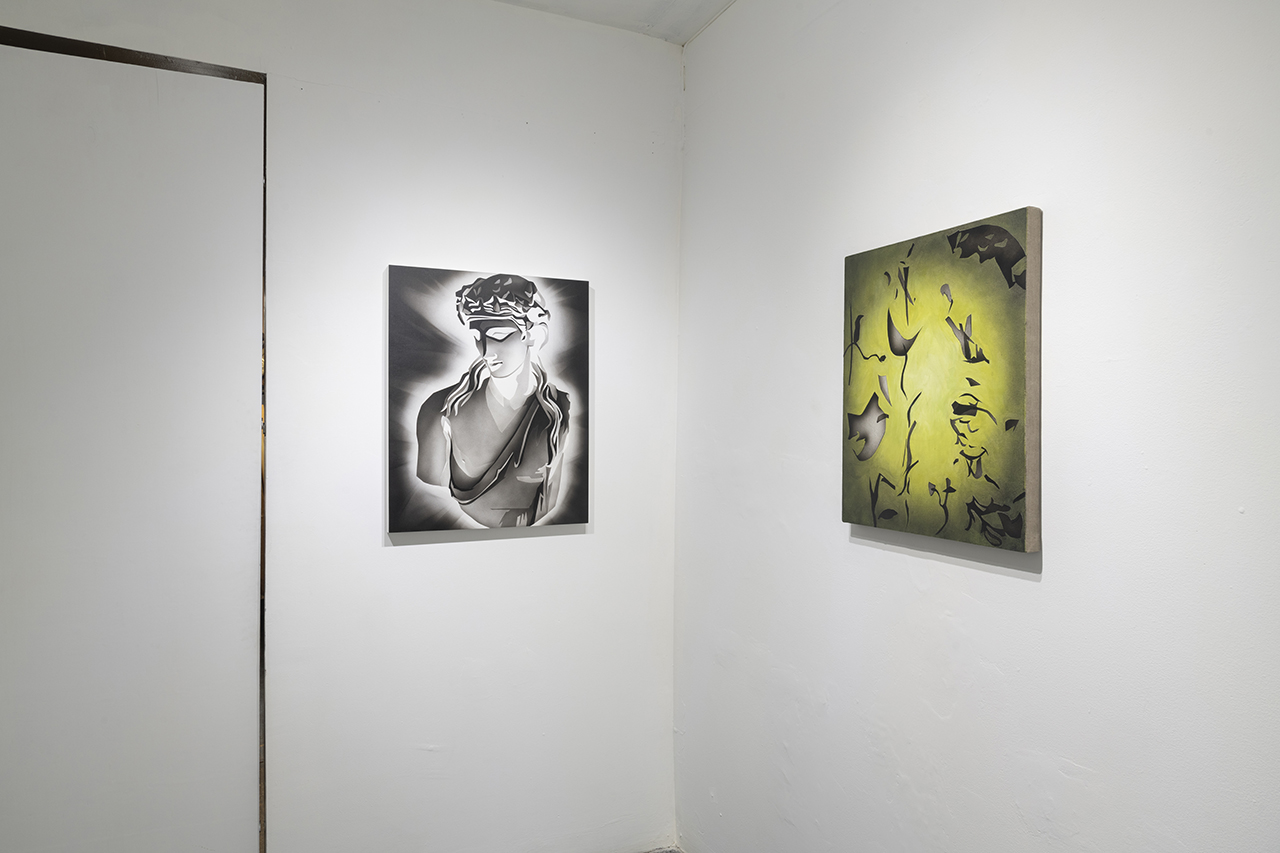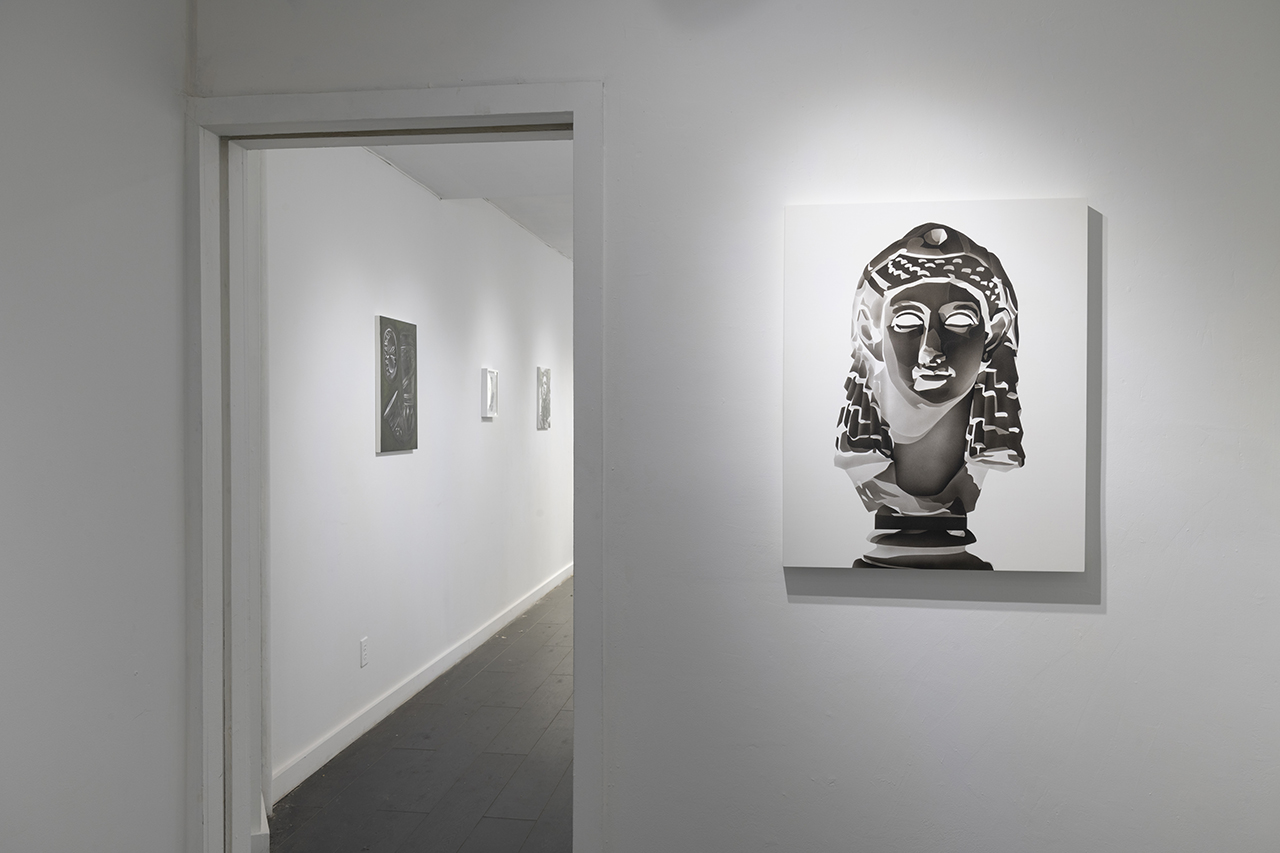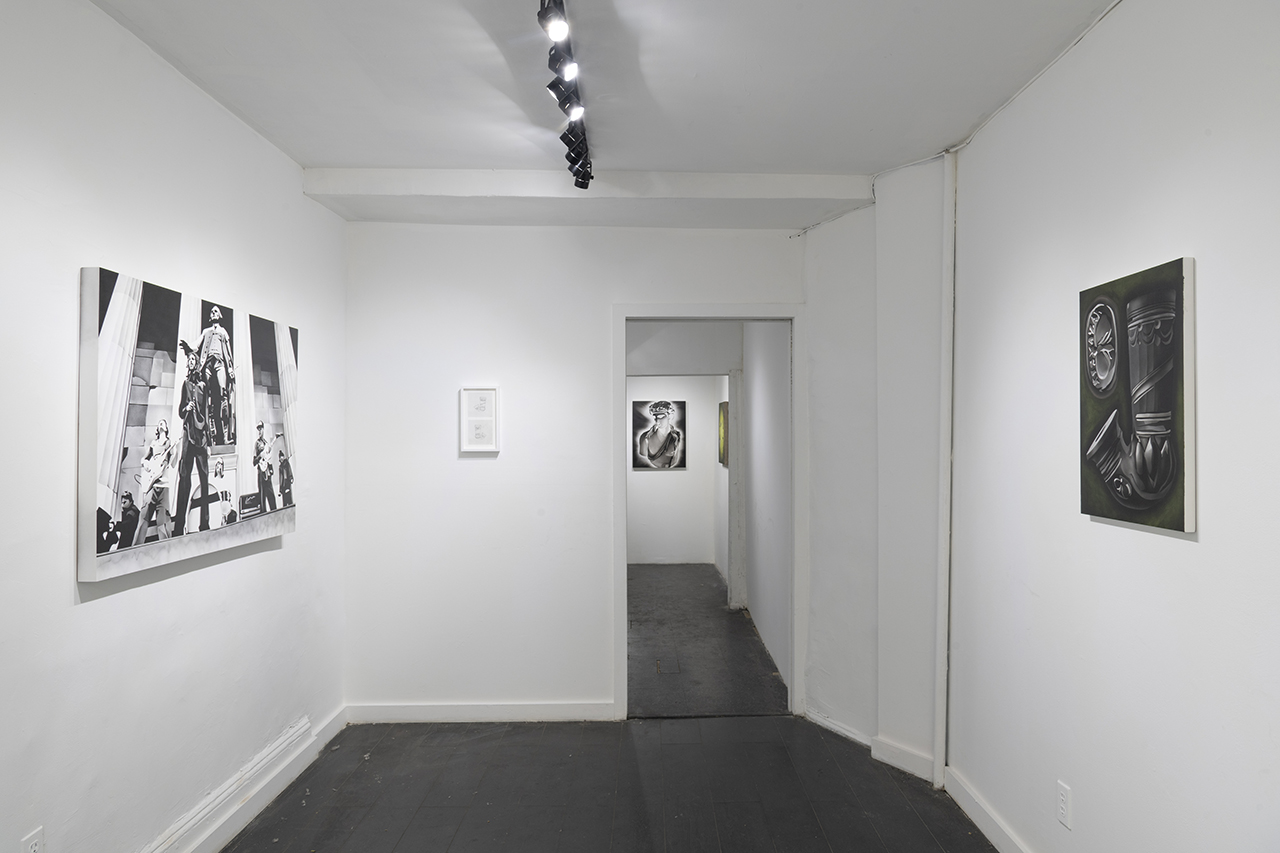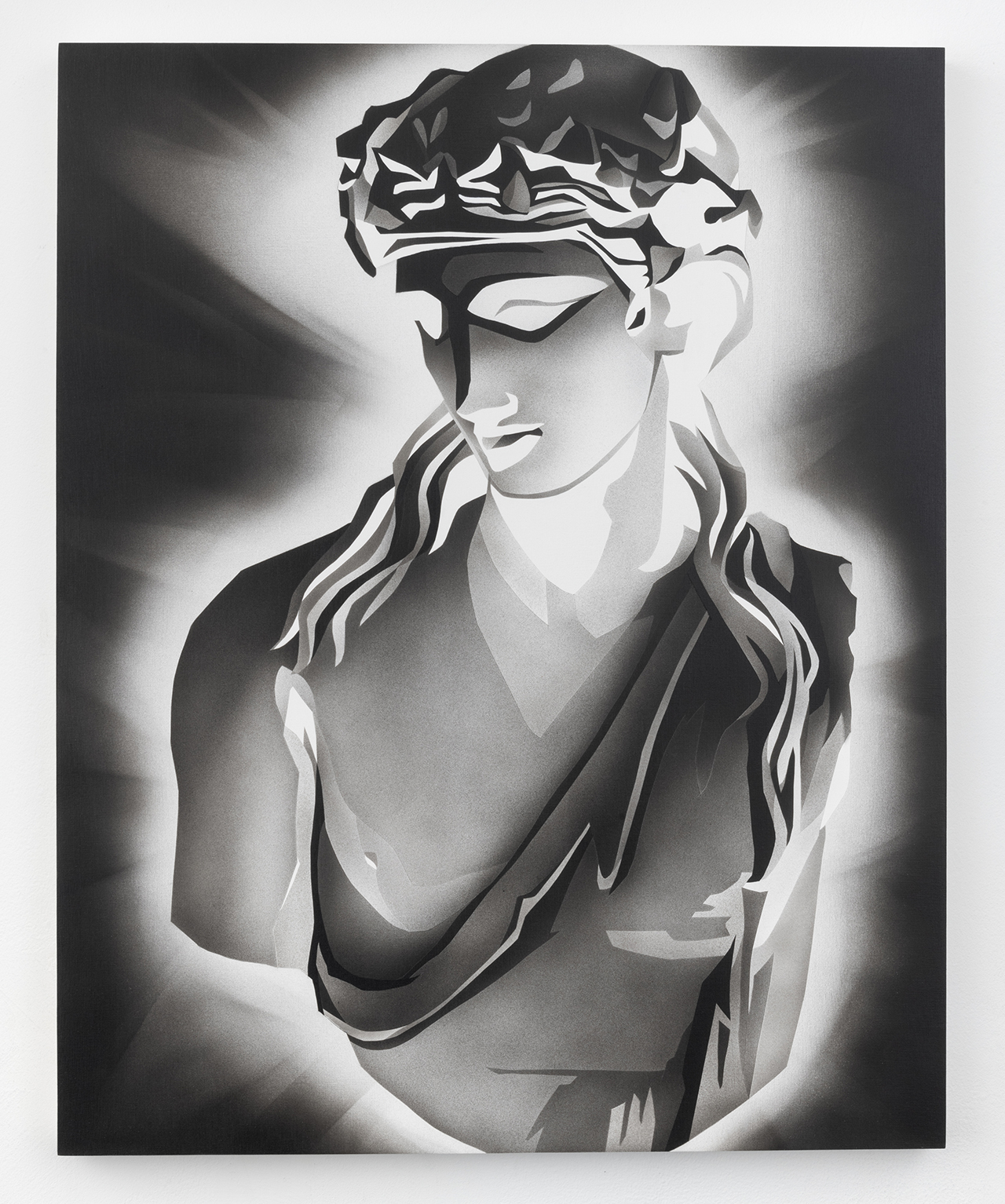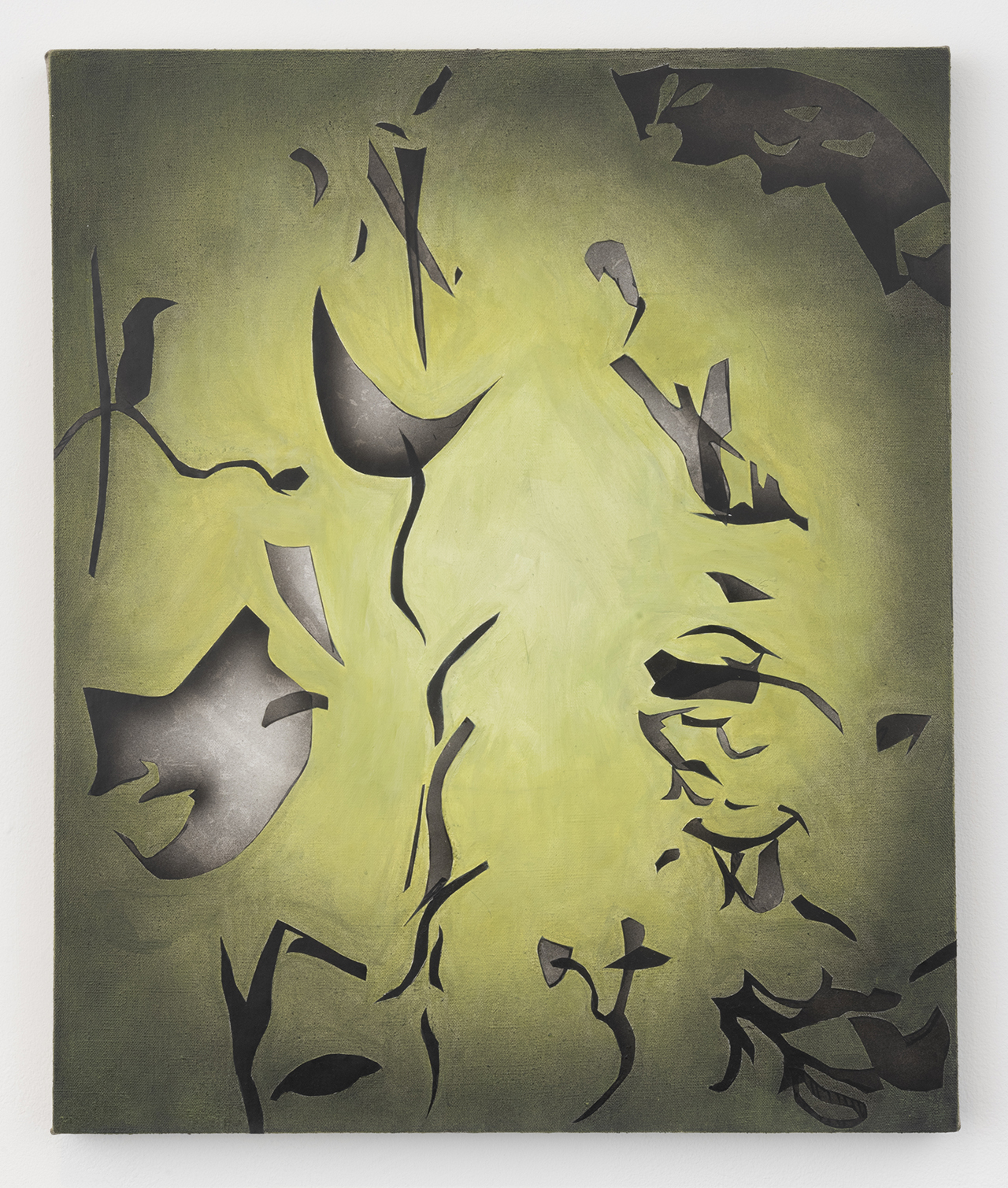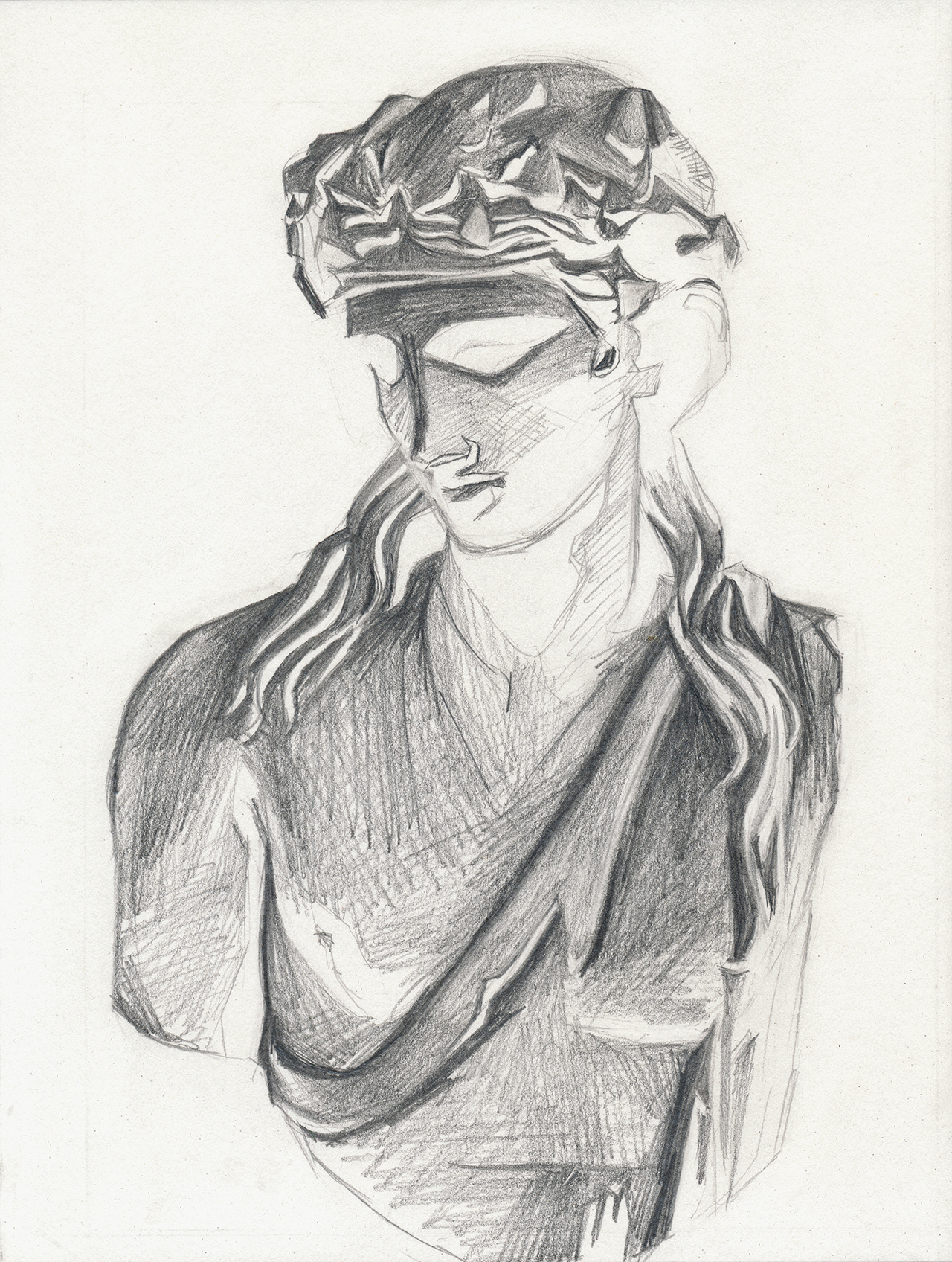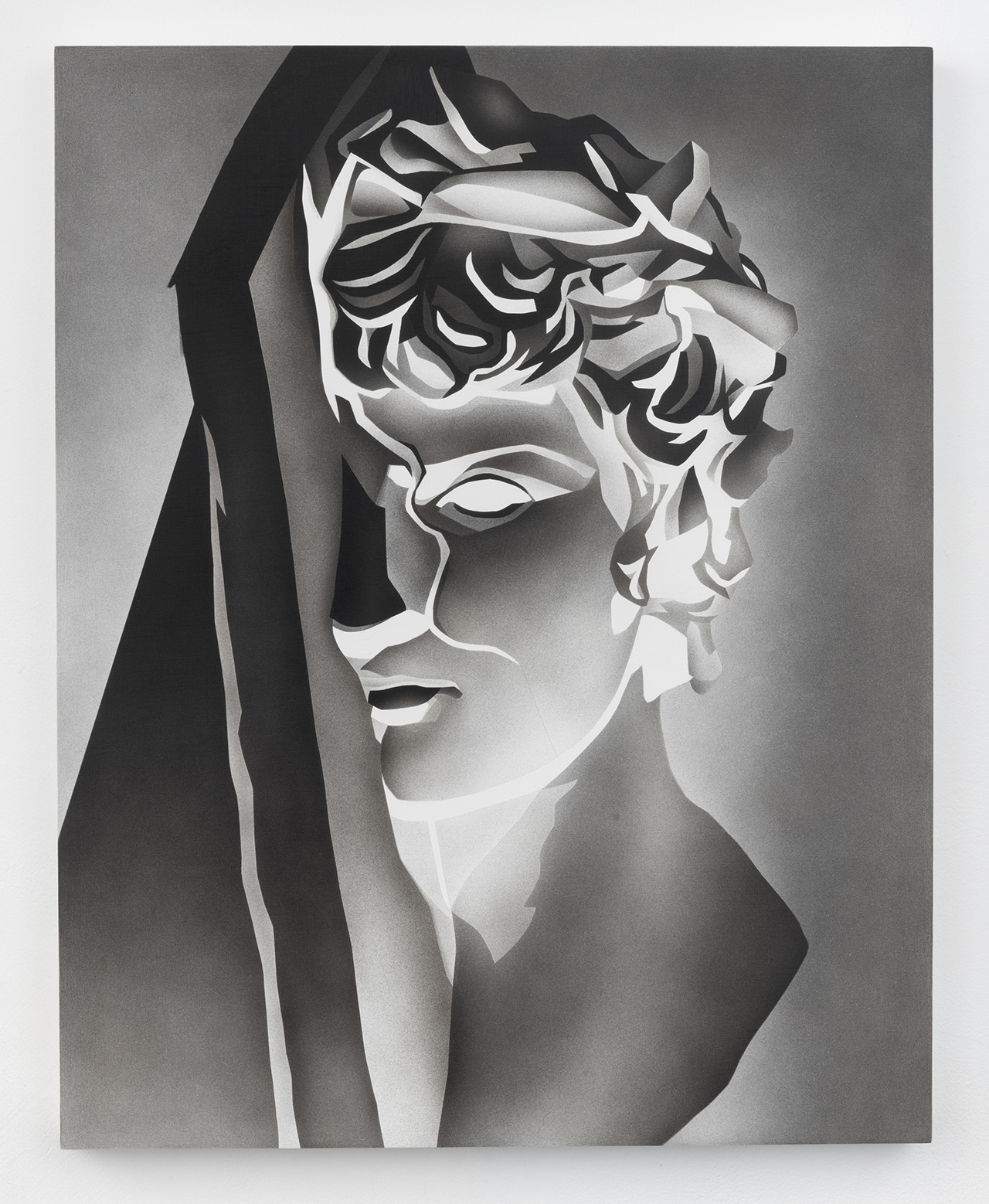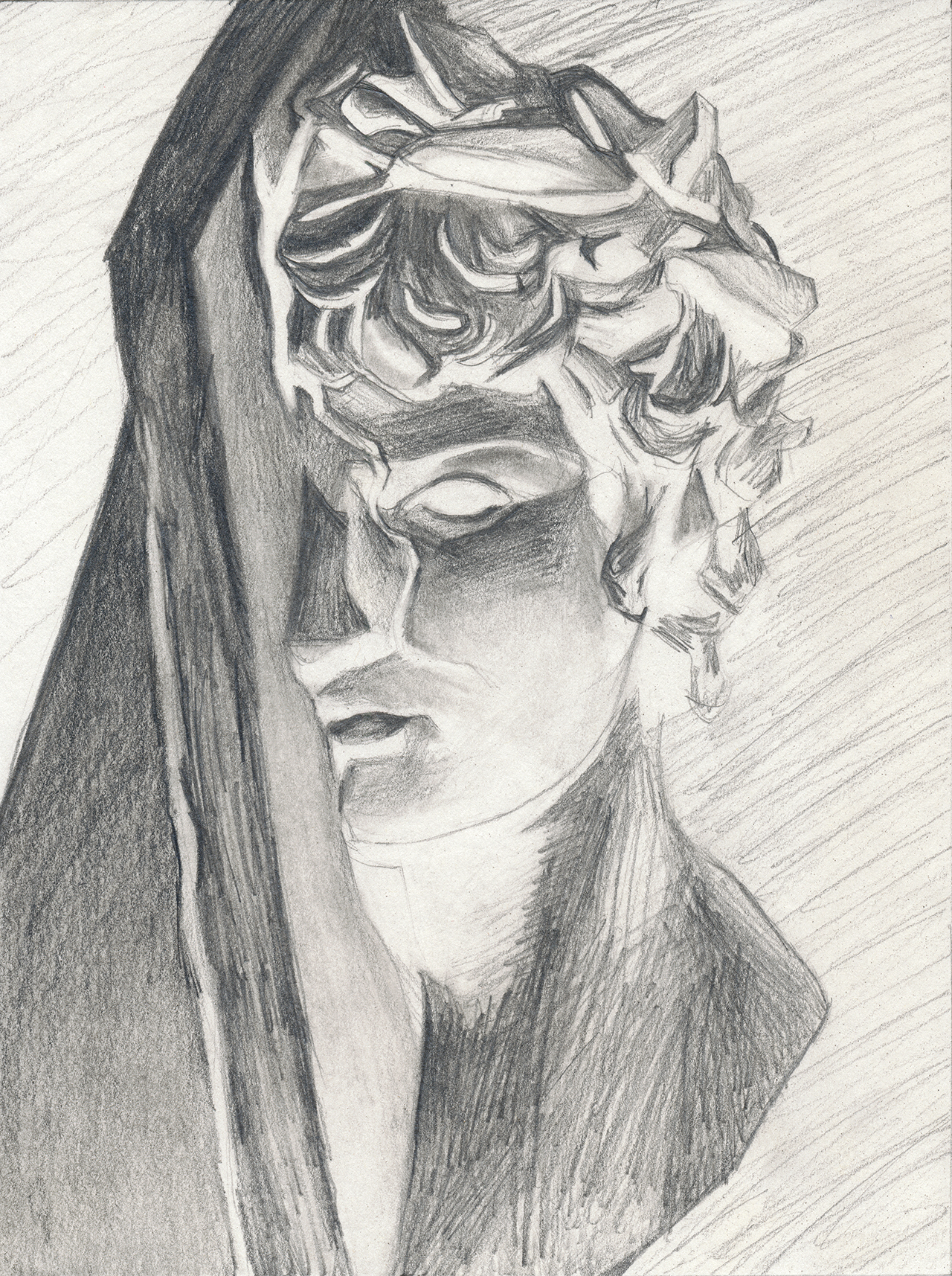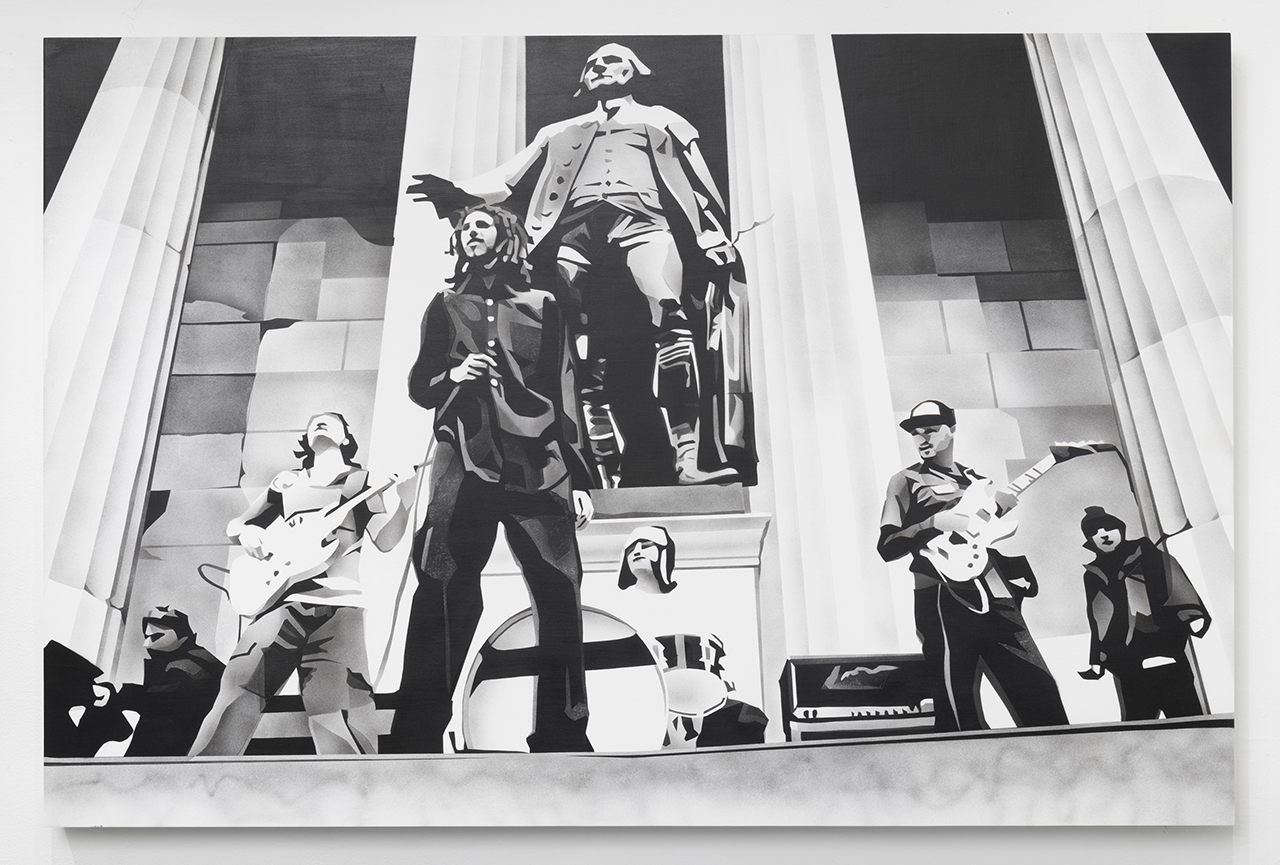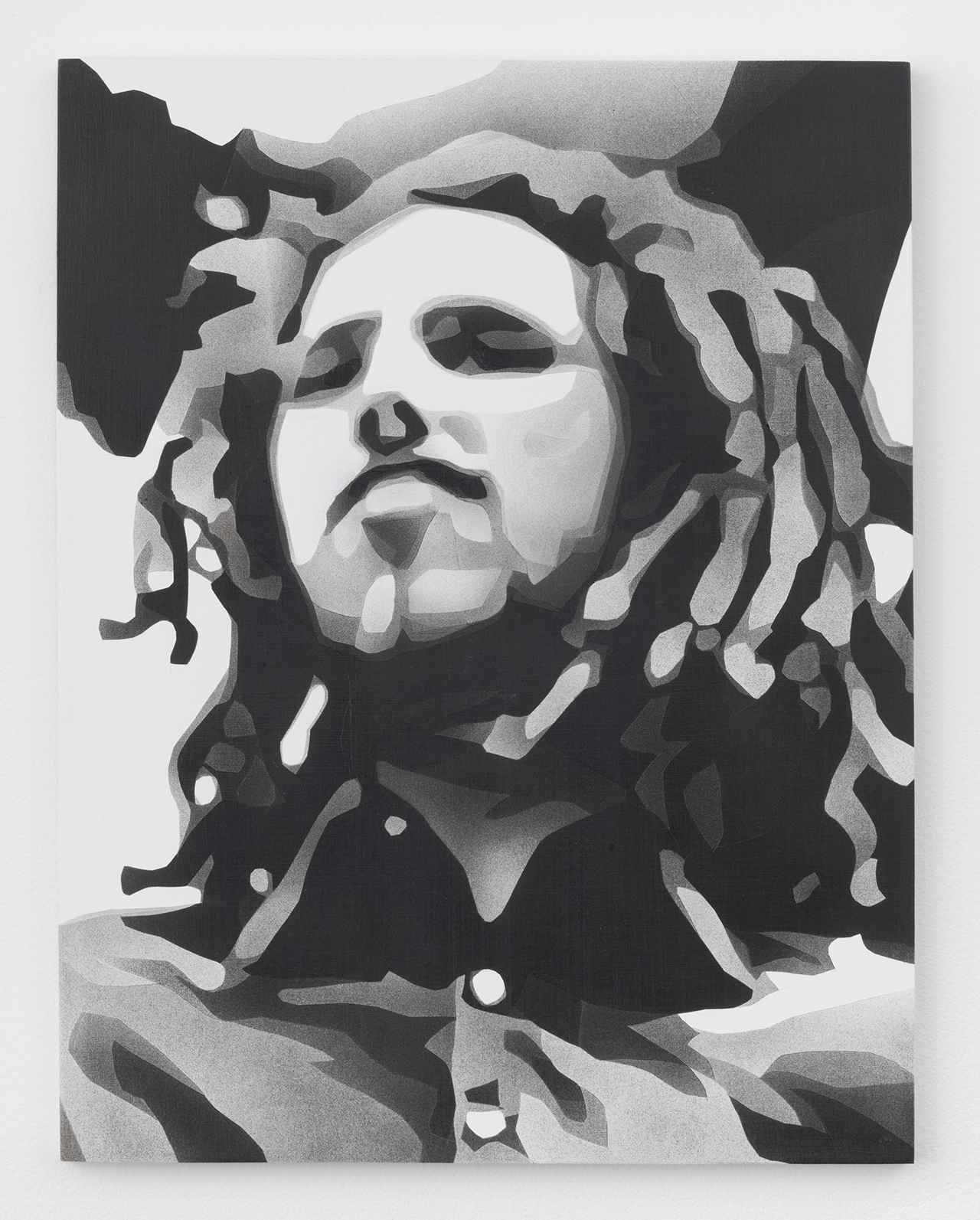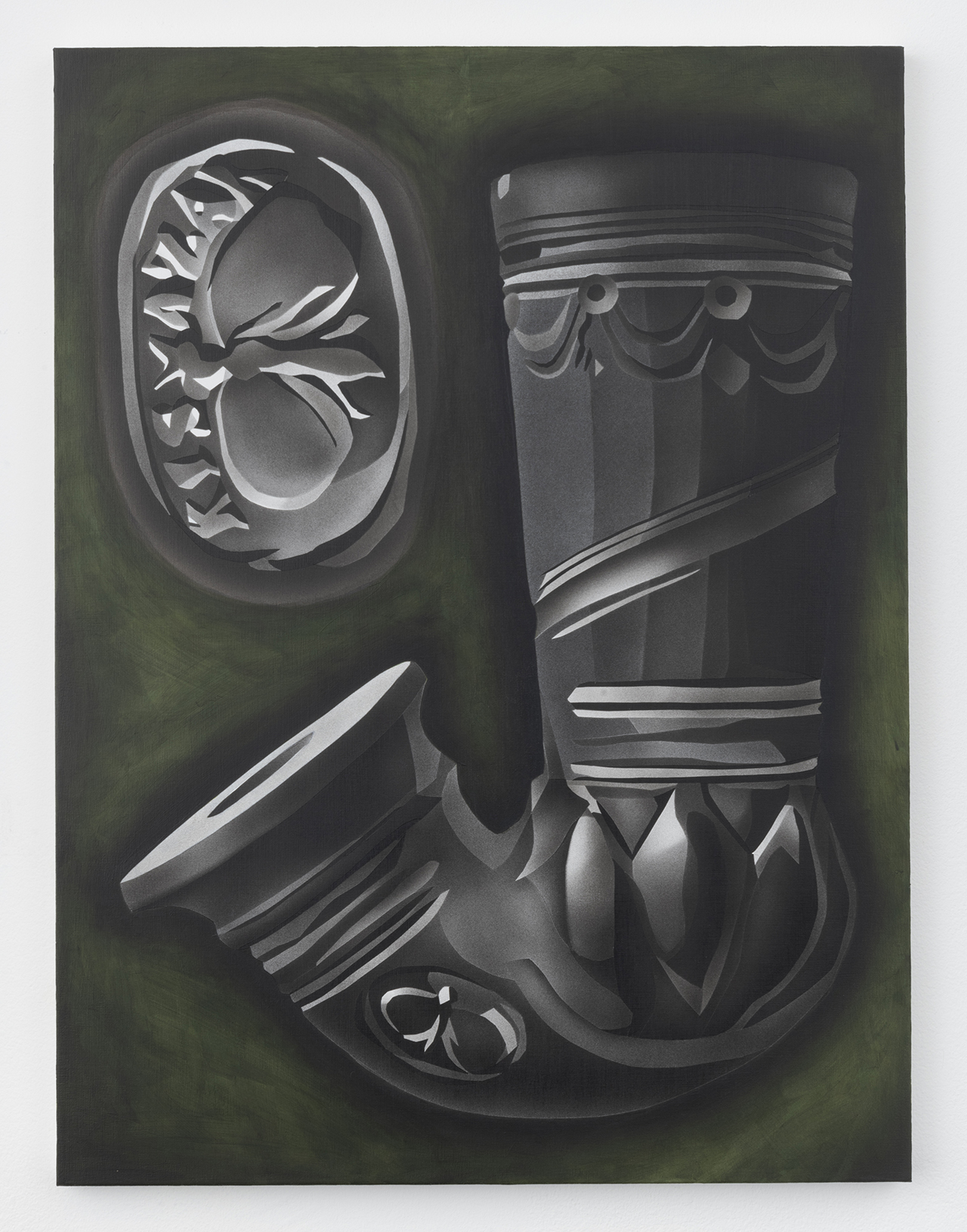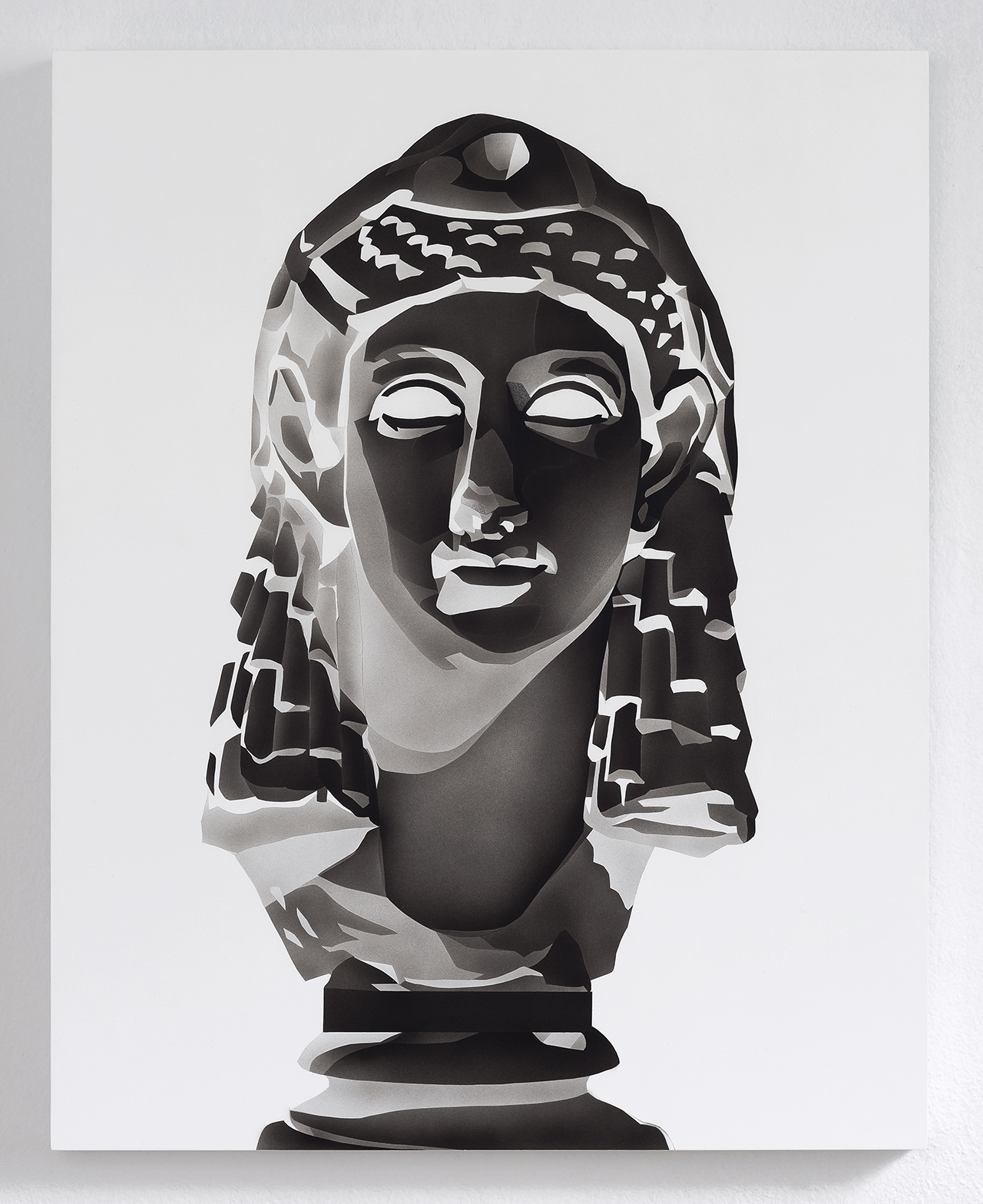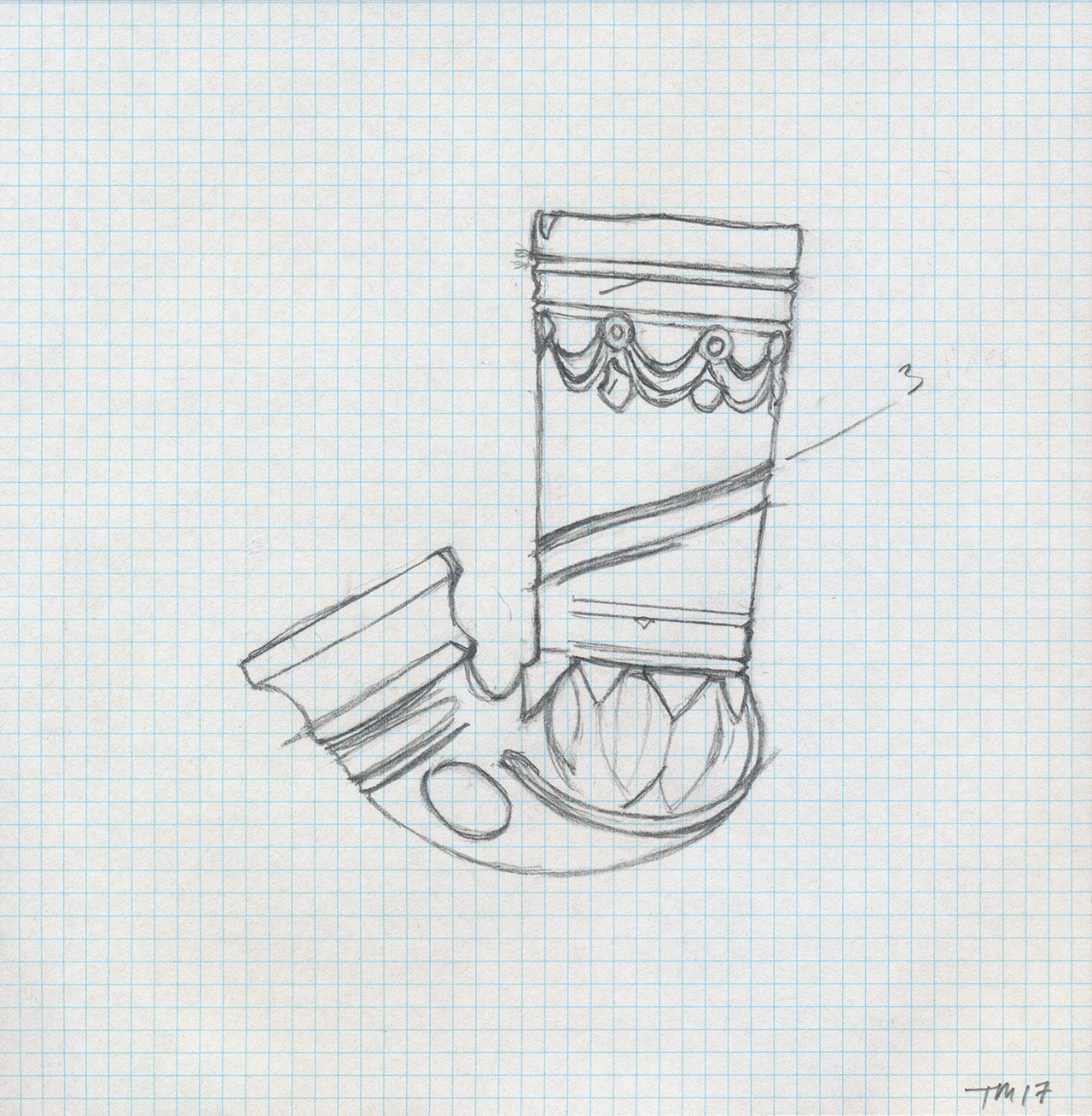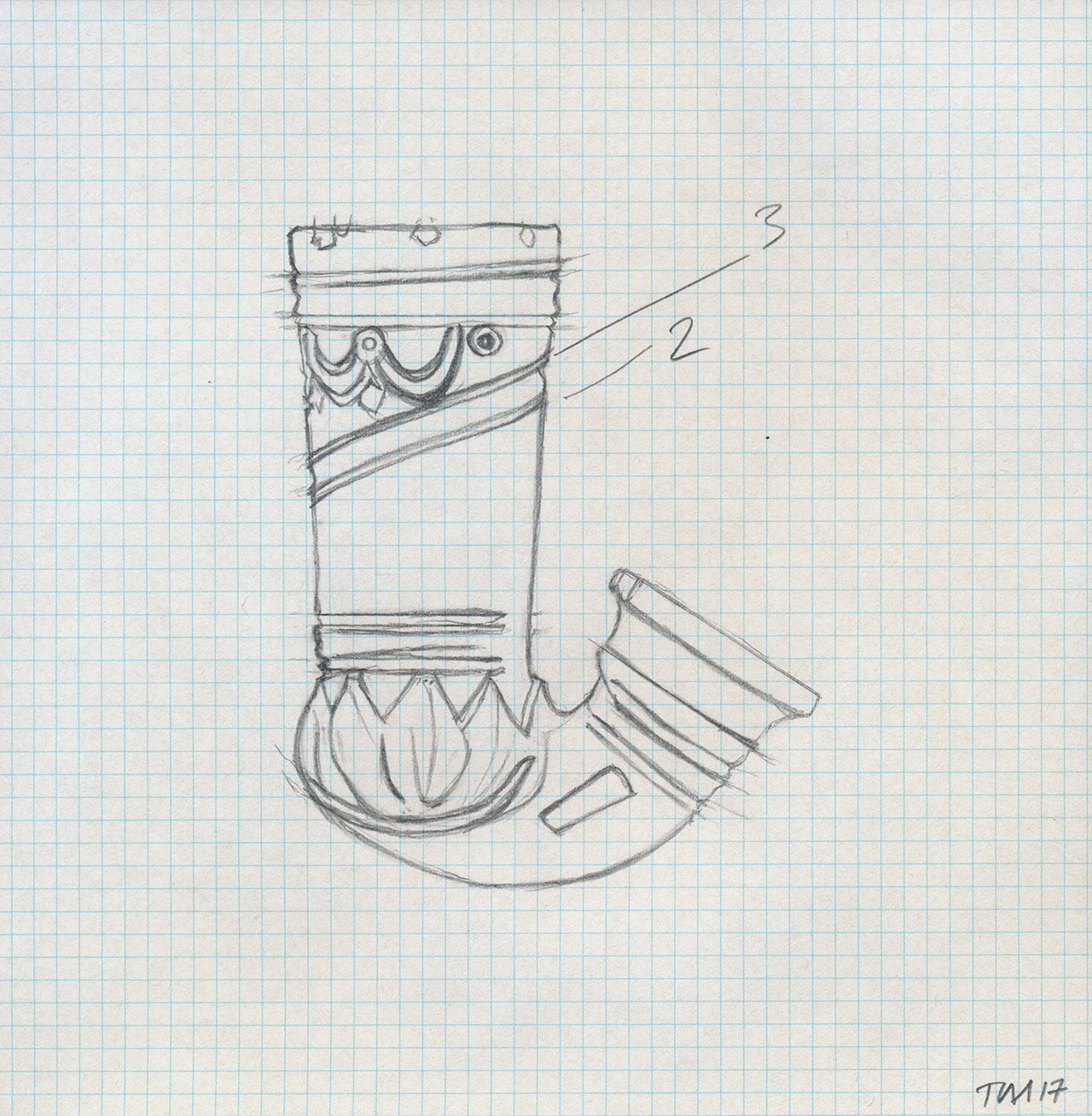Tracy Molis
Eclipsing, Your Lips Sing, Incandescent,
November 11th - January 13th
Opening Reception: November 11th (6-8pm)
Kai Matsumiya presents Tracy Molis’s debut solo exhibition, titled “Eclipsing, Your Lips Sing, Incandescent” at the gallery. The exhibition features new paintings that developed out of meticulous observations of light shone through dark transparent slides. These slides often represent sacred or sacred-appearing monuments, icons, and objects from antiquity to the present-day. The artist starts with a graphite drawing of each illuminated slide with an ever-precise rendition, and then articulated into observed contoured shapes.
The delineated shapes and light gradations evoke a moment flashed from a grayscale camera in the dark. The resulting image reverses the tonal variations in which lightness becomes darkness and vice versa. Molis treats the illuminated slides – the negatives -- as pictures in themselves, and in the final, airbrushed paintings, they often resemble something more akin to ancient sculptures cut from stone due to their evident tactility than strokes on canvas.
The mylar stencil shapes used to make some works, such as those from portraits of Hadrian the Roman emperor’s androgynous male muse Antinous, the “world’s first supermodel”, are sometimes then scrambled across another canvas. With the work imbued with a chartreuse-green background quoted from an archaeologist's soil color charts, the contoured shapes comprising the representation resemble shattered fragments found at archaeological sites. Hadrian’s Code promises the Rule of Law, and it lives and breathes in some places but disperses amidst the ruins in others, only for the lost pieces to be picked up again.
The portraiture of Antinous yearns for completeness as his visage abruptly glues against a rectangular slab. In other works, Molis synthesizes and recombines the imagery of the ancient alongside the new, such as Rage against the Machine performing in front of the statue of George Washington on Wall Street in the late 90’s, a circumstance that seems to represent a bygone era in our city.
The archaeological impulse and the questions raised thereof strike at the heart of Molis’s practice. While archaeology is typically viewed as an objective type of social science, Molis encourages us to consider the social, political, and artistic influences that determine our perceptions of all types of art, both pre-modern and contemporary, as it pertains to our current state of affairs and our lived experiences. In other words, the past can change, therefore archaeology changes; ancient sentiments perpetually re-activate and re-articulate with renewed salience across time. Some historical accounts are indeed myths in that they could not have existed, yet such myths become real in the ways in which we adhere to them.
What’s considered or even physically seen as “authentic” can rapidly change; for example, the advancing application of forensics in archaeology forced a consensus that the Greco-Roman world was indeed highly colorful, as opposed to a more traditionalist assumption of a world more characterized by homogeneous, unadorned, unpainted, pure materials. The myth-making complex, in turn, operates on myths-becoming-truisms, and thereby generates real consequences, for reasons that are yet right or wrong, but with the story happening as it moves forward. It is through Molis’s questions of archaeology, that she uses as a principal tool in her art practice, we are thus proud to present Eclipsing, Your Lips Sing, Incandescent, which continues until Jan 13th.
Tracy Molis (b. Los Angeles) lives and works in New York, NY. Recent solo exhibitions include Hollywood Forever at 3 AM, Clima, Milan, 2016, and OSg-OSz at Night Gallery, 2015. Molis has exhibited in group shows at Zevitas Marcus, Los Angeles; Joe Sheftel Gallery, NY, Underdonk, Brooklyn; and ReMap4 in Athens, Greece. Her performances include In Response: Other Primary Structures at The Jewish Museum, NY, and her work was chosen to represent New York in the Bosch Young Talent show at Stedelijk Museum s' Hertogenbosch, Netherlands. She received an MFA from Columbia University in 2011, where she now co-teaches an interdisciplinary course on expanded archaeological illustration in the Department of Anthropology.
